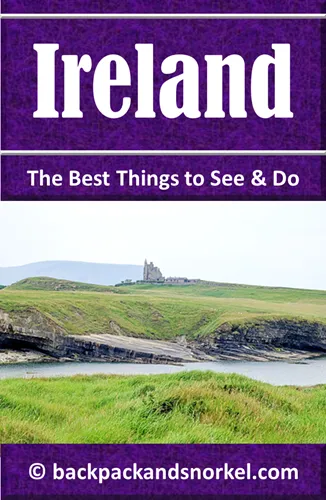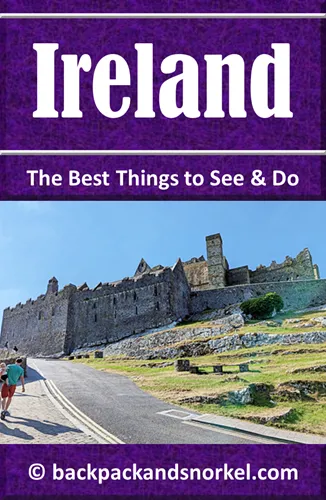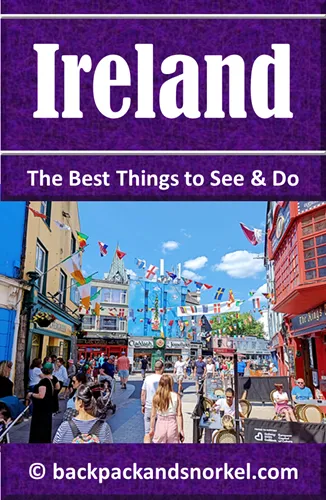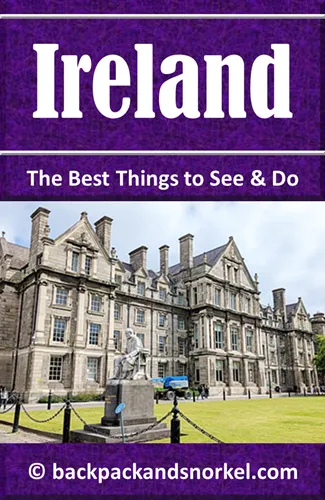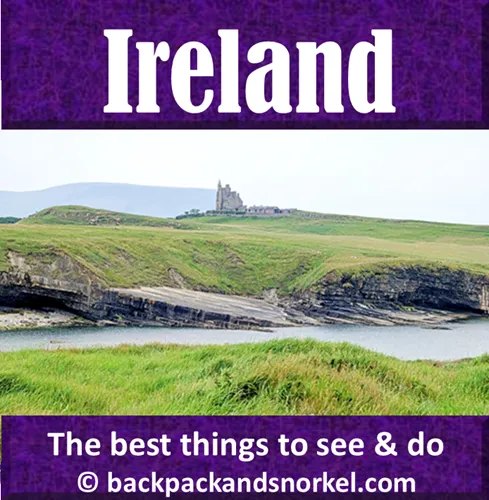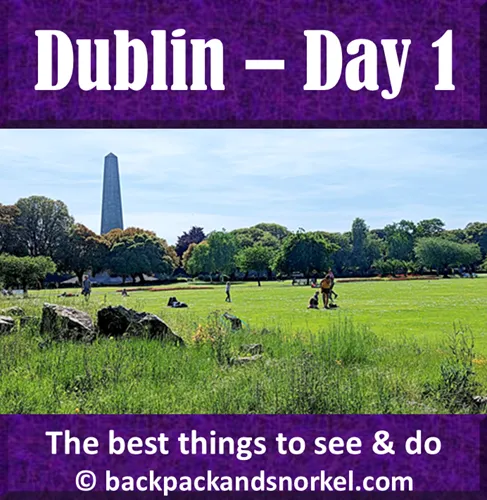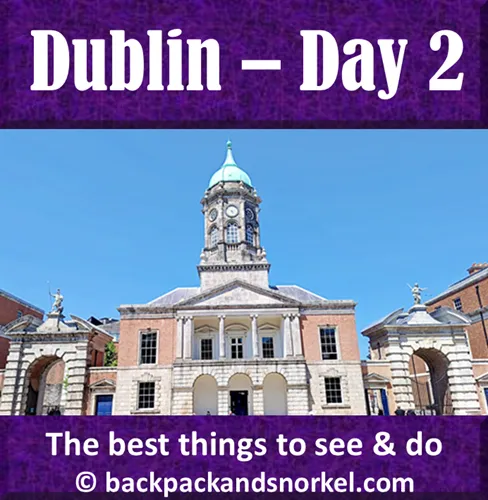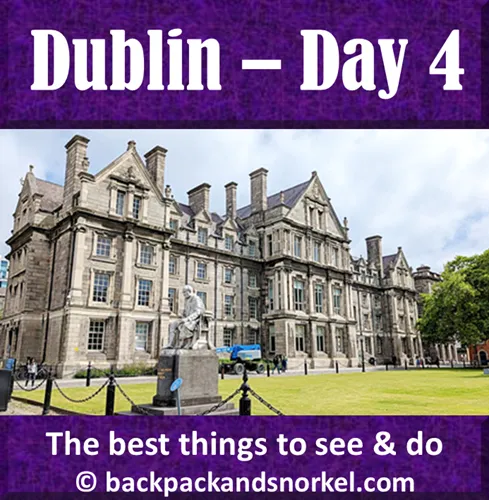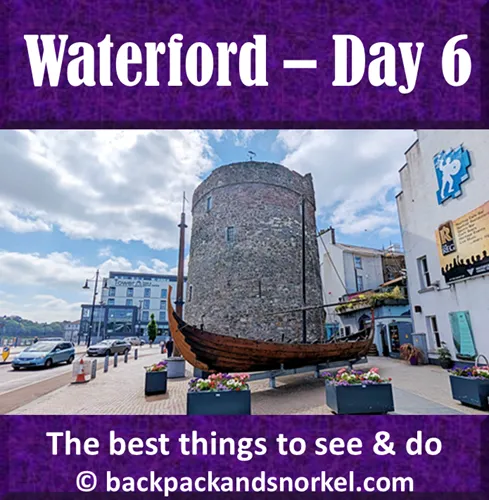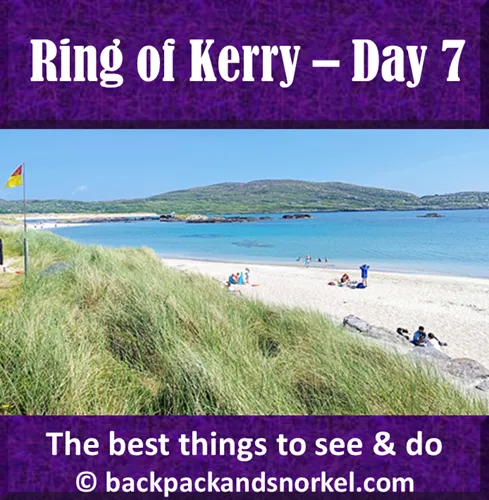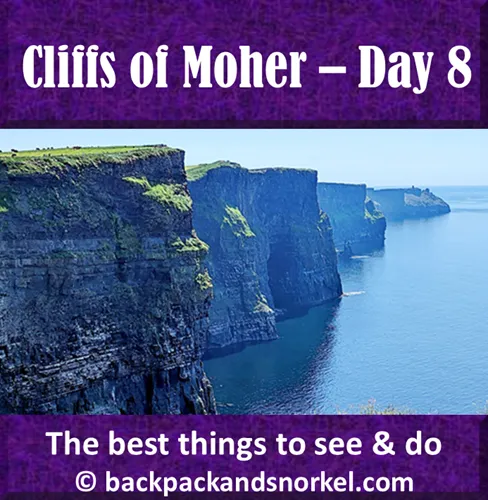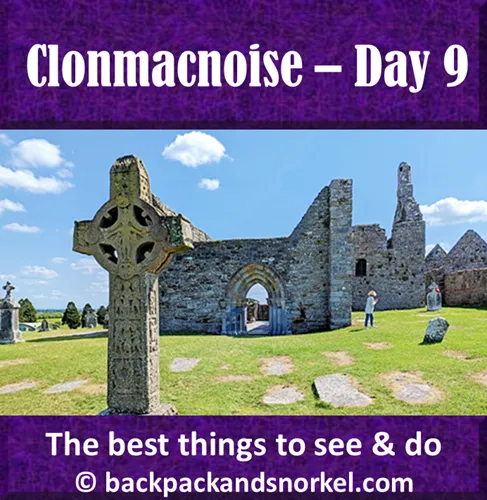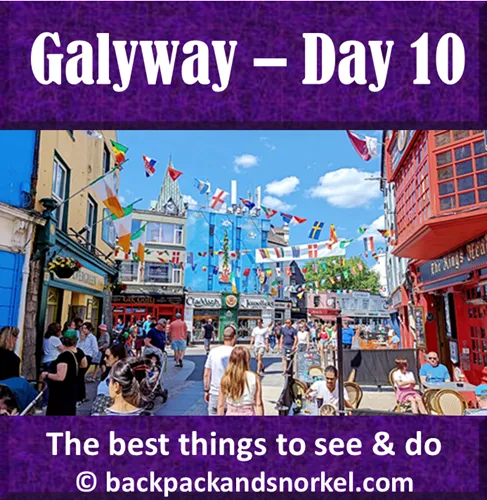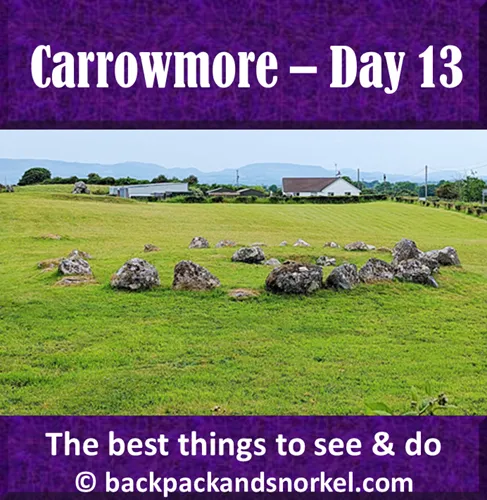Backpack and Snorkel Travel Guide for Connemara National Park - Ireland Purple Travel Guide
Today we will explore Connemara National Park. We provide detailed information and the best things to see and we show lots of photos so you know what you can expect.
Leave your hotel after breakfast and take a taxi to the harbor so that you can catch the ferry to Rossaveel Harbour. Ideally, you should be at Rossaveel Harbour before 11am.
From the harbor, where you pay cash for parking, you will drive to Connemara National Park where you can stretch your legs, hike on one of the trails, and enjoy the beautiful views.
Afterwards, you will drive to Sligo to your next hotel.

1 = Inis Mór
2 = Rossaveel Harbour
3 = Connemara National Park
4 = Sligo
Table of contents
Connemara National Park
Connemara National Park is a 4,900-acre (2000 ha) park that opened to the public in 1980. It is one of six national parks in Ireland and contains mountains, bogs, heaths, grasslands, and forests. The park is notable for its diverse bird life with native birds and migratory birds.
There are four maintained hiking trails in the park – all are loop trails:
| Trail | Distance in miles (km) | Level of Difficulty | Start |
| Ellis Wood Nature Trail (Green Route) | 0.3 (0.5) | Easy | Visitor Center |
| Sruffaunboy Trail (Yellow Route) | 1 (1.5) | Easy | Visitor Center |
| Lower Diamond Hill (Blue Route) | 1.9 (3) | Moderate | Visitor Center |
| Upper Diamond Hill (Red Route) | 2.3 (3.7) | Strenuous | Off Blue Trail |
The green trail is mostly boardwalk, woodland trails, and stone steps. You will see signs pointing out different trees and there is a waterfall along the way.
The yellow trail has mostly stone, and gravel paths. There is a steep descent towards end and you will have scenic views of Diamond Hill, Ballynakill Harbour, Barnaderg Bay and Tully Mountain.
The blue trail provides scenic views of Diamond Hill, and the Atlantic Ocean. You will walk over dirt and gravel paths and a boardwalk.
The red trail has dirt, stone, and gravel paths and boardwalks. It provides panoramic views of the Twelve Bens mountain range and Kylemore Abbey.
Most visitors seem to hike the yellow or blue routes.
Be advised that you may need mosquito repellent and that there can be ticks. So be prepared.
There is a small museum inside the visitor center – make sure to explore it.
Next to the visitor center is a theater. You can ask at the visitor center when the next showing of the Connemara Park video is. We really liked it.
While Connemara National Park is nice, the drive to the park is very scenic, too.


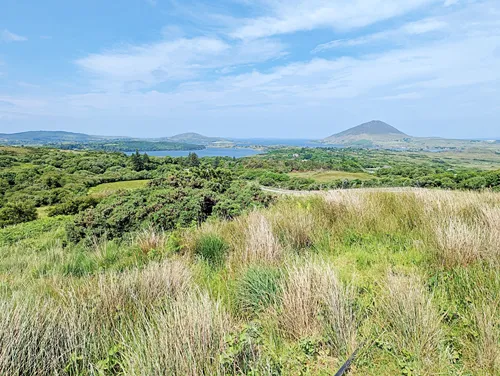

Where to stay in Sligo
With a population of 20,600 people, Sligo is the largest town in County Sligo. Its name means Abounding in Shells, and refers to the abundance of shellfish in the River Garavogue that flows through the city, and shells in the ground.
Probably because of the abundance of shellfish, the Sligo area is inhabited since at least 4000 BC.
But don’t expect to see ancient buildings. When Sligo experienced rapid economic growth in the 19th century, old buildings were torn down and replaced with newer buildings to support that growth.
The only medieval building that is still left are the ruins of the Sligo Holy Cross Dominican Friary (Sligo Abbey) from 1252.
Today, Sligo still has its medieval street plan, but the buildings you see are mostly from the 19th century.
Here is the accommodation that is available when you visit:
In case that you like to explore Sligo, which we will not on this trip, here is some more information about the town:
Probably because of the abundance of shellfish, the Sligo area is inhabited since at least 4000 BC. The oldest stone age (neolithic) causewayed enclosure (land enclosed by ditches with a number of causeways crossing them) in Ireland was found here from that time. Artefacts found here suggest that the first farmers in Ireland lived here.
The area around the town of Sligo also has one of the highest densities of prehistoric archaeological sites in Ireland. It is also the only place in Ireland where all types of Irish megalithic monuments are together.
Sligo Bay was home to an ancient natural harbor that was visited by Greek, Phoenician, and Roman traders.
The first medieval town of Sligo, and the port of Sligo, were established by the Normans when Sligo Castle was built in 1245. In 1253, a Dominican Friary was founded in Sligo.
In 1257, the Norman advance in Sligo was stopped after the battle of Credran Cille, and the town was brought under native Irish control. No other Norman-founded town in Ireland had such a short Norman rule.
Throughout the middle ages, Sligo was sacked or besieged 49 times, and yet, it continued to flourish.
It is believed that Irish author Bram Stoker, who wrote Dracula in 1897, was influenced by stories from his mother (who was likely born in Sligo), about the Sligo cholera outbreak of 1832.
During the Great Famine (1847 – 1851), more than 30,000 people emigrated from the port of Sligo.
Today, Sligo still has its medieval street plan, but the buildings you see are mostly from the 19th century. The only medieval building that is still left are the ruins of the Sligo Holy Cross Dominican Friary (Sligo Abbey) from 1252.
The reason for that is that Sligo experienced rapid economic growth in the 19th century and at that time, old buildings were torn down and replaced with newer buildings to support that growth.
The Coachhouse @ Kingsfort House (book)
If you don’t mind staying 9 miles (14 km) or 15 min outside of Sligo in the tiny and quiet village Ballintogher, then we have a recommendation for you.
With its population of 330 people, everything here, including a grocery store and a pub, are within walking distance of the hotel.
The Coachhouse @ Kingsfort House is a small hotel where the owner will personally take care of you. You order your breakfast the evening and choose the time when you want to eat, and in the morning they bring it to your room. There is no breakfast room and, if I remember correctly, there was also no TV in the room.
The rooms are clean and you have views of the garden.
The owner is very friendly, and happy to give you recommendations of things to see and do. Some of the destinations that we will visit tomorrow, we only did because of his recommendation.

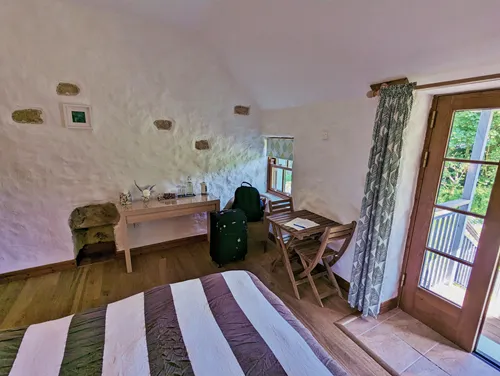



Where do you want to go now?
Other popular Purple Travel Guides you may be interested in:
Like this Backpack and Snorkel Purple Travel Guide? Pin these for later:
